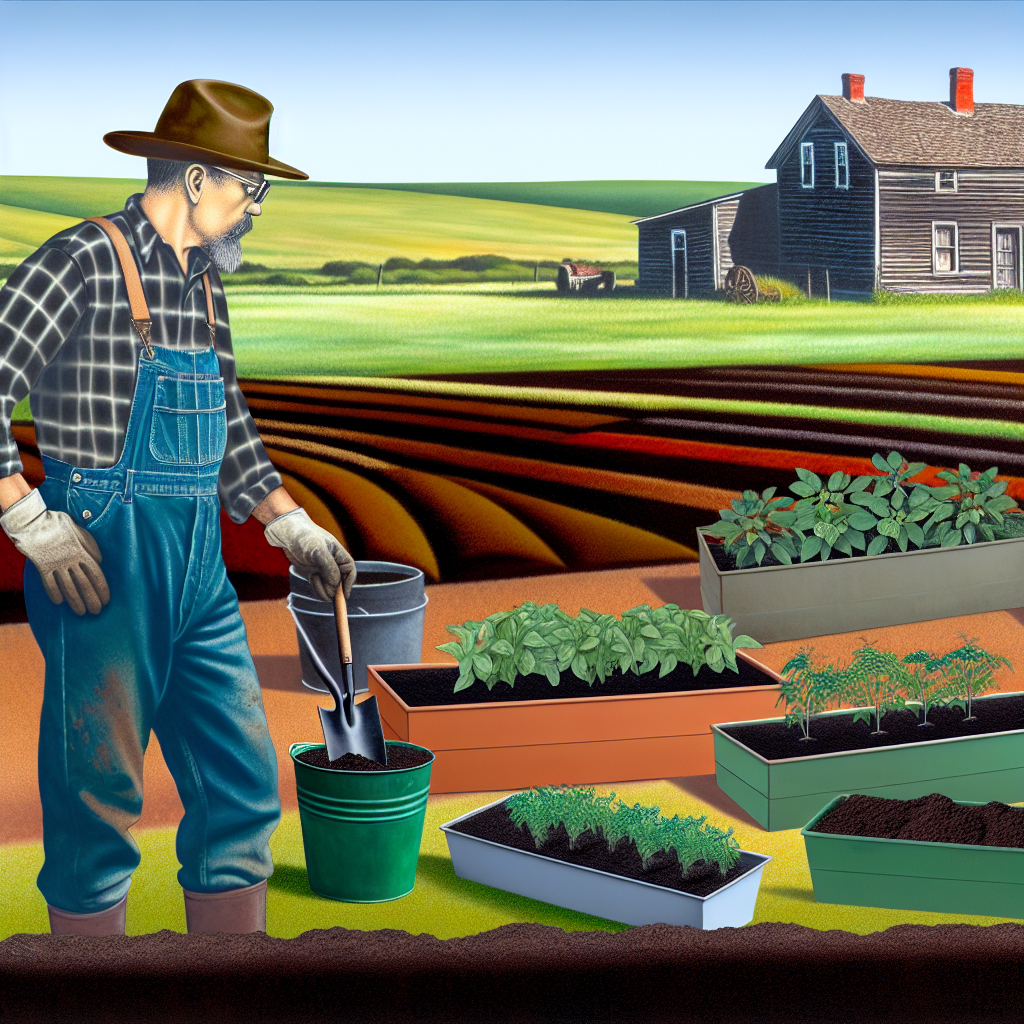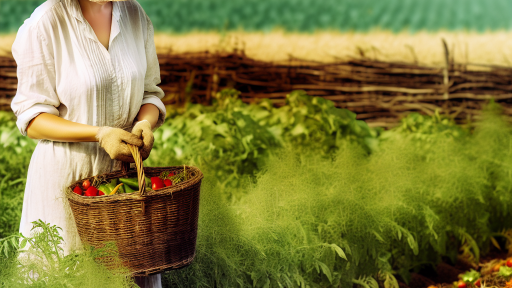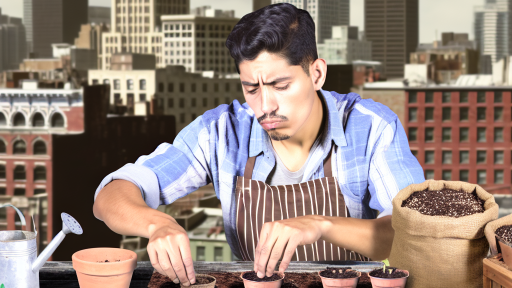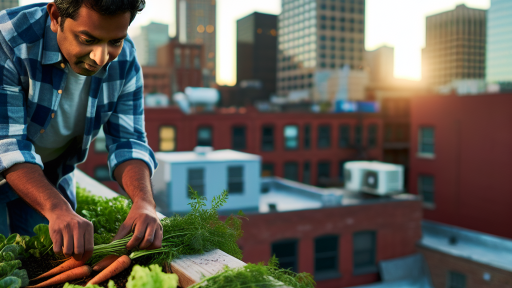Understanding the Basics of Container Gardening
What is Container Gardening?
Container gardening involves growing plants in pots or containers.
This method is perfect for small spaces and urban environments.
It allows individuals to cultivate a variety of plants without large plots of land.
Benefits of Container Gardening
One major benefit is the flexibility it provides.
You can move containers to optimize light and climate conditions.
Additionally, containers often require less water than traditional gardens.
This method also helps in preventing soil compaction.
Choosing the Right Containers
Selecting suitable containers is crucial for successful gardening.
Materials like clay, plastic, or ceramic each offer unique benefits.
Ensure your containers have adequate drainage holes.
Consider the size of your plants when choosing the container size.
Soil and Fertilizers
Using the right soil is essential for container gardening.
Opt for a high-quality potting mix that retains moisture.
Add organic fertilizers to enhance plant growth effectively.
Regularly check nutrient levels to keep your plants thriving.
Transform Your Agribusiness
Unlock your farm's potential with expert advice tailored to your needs. Get actionable steps that drive real results.
Get StartedWatering Techniques
Watering is vital to the health of container plants.
Always check soil moisture before watering.
Overwatering can lead to root rot, so be cautious.
Consider using self-watering pots for added convenience.
Plant Selection
Choose plants that will thrive in container environments.
Herbs, vegetables, and flowers adapt well to this method.
Pair plants with similar water and light requirements together.
This approach maximizes space and improves growth efficiency.
Choosing the Right Containers for Small Farms
Understanding Container Options
Different containers suit various plants and farming styles.
Consider materials such as plastic, ceramic, or fabric for your containers.
Plastic containers are lightweight and affordable, making them popular.
Ceramic pots offer durability and aesthetic appeal but can be heavy.
Fabric containers promote good aeration and drainage, ideal for root growth.
Selecting the Appropriate Size
Container size plays a crucial role in plant health.
Small containers can restrict root development and limit growth.
Larger containers provide ample space for roots to spread out.
Refer to specific plant requirements when choosing container size.
Ensuring Proper Drainage
Drainage is essential to prevent waterlogged soil conditions.
Look for containers with drainage holes at the bottom.
If necessary, add layers of gravel or rocks to further enhance drainage.
Monitor soil moisture levels to ensure appropriate watering practices.
Considering Mobility and Placement
Mobility allows for optimal sunlight and protection from harsh weather.
Select lightweight containers for easy relocation around your farm.
Consider using rolling plant stands for larger, heavier pots.
Showcase Your Farming Business
Publish your professional farming services profile on our blog for a one-time fee of $200 and reach a dedicated audience of farmers and agribusiness owners.
Publish Your ProfileStrategically place containers where they receive adequate sunlight.
Incorporating Vertical Gardening Solutions
Vertical gardening maximizes limited space on small farms.
Utilize wall-mounted planters or tiered plant stands for efficient space use.
Vertical containers allow for a variety of plants in small areas.
This technique also enhances airflow and reduces pest access.
Selecting Suitable Soil and Fertilizers for Container Plants
Understanding Soil Requirements
Containers require well-draining soil to prevent root rot.
Opt for a lightweight potting mix designed for container gardening.
This mix retains moisture while providing aeration to the roots.
Additionally, a mix containing organic matter enhances soil fertility.
Choosing the Right Soil Components
Select soil with a blend of peat moss, vermiculite, and compost.
Peat moss aids moisture retention and provides nutrients.
Vermiculite improves drainage and encourages root growth.
Compost adds beneficial microorganisms and enhances soil structure.
Selecting Fertilizers for Container Plants
Container plants often require more nutrients than garden plants.
Use a balanced, slow-release fertilizer for consistent nourishment.
Apply according to the manufacturer’s instructions for best results.
Liquid fertilizers can supplement nutrients during the growing season.
Understanding pH Levels
Monitor the pH levels of your container soil.
Most plants thrive in a pH range of 6.0 to 7.0.
Test kits are readily available at garden centers.
Adjust soil pH by adding lime to raise it or sulfur to lower it.
Maintaining Soil Health
Regularly refresh your container soil every season.
Replace depleted nutrients by adding fresh compost or amendments.
Additionally, keep an eye out for signs of nutrient deficiencies.
Green leaves indicate healthy plants, while yellowing may suggest issues.
Explore Further: Companion Planting Strategies For Container Gardens
Optimal Plant Selection for Container Gardening in Small Spaces
Choosing the Right Plants
Selecting the right plants is crucial for successful container gardening.
Consider plants that thrive in smaller spaces.
Companion planting can enhance growth and pest management.
Look for varieties that are specifically bred for containers.
Herbs for Flavor and Function
Herbs take up little space while providing great flavor.
Popular options include basil, parsley, and cilantro.
These herbs can easily grow in small pots on a windowsill.
Additionally, they attract beneficial insects to your garden.
Vegetables for Container Gardening
Choose vegetables that grow well in confined spaces.
Cherry tomatoes and radishes adapt well to containers.
Leafy greens like spinach and kale thrive in smaller pots as well.
These vegetables also provide abundant harvests with proper care.
Flowers for Aesthetic Appeal
Incorporate flowers for beauty and pollinator attraction.
Marigolds and petunias are excellent choices for containers.
Showcase Your Farming Business
Publish your professional farming services profile on our blog for a one-time fee of $200 and reach a dedicated audience of farmers and agribusiness owners.
Publish Your ProfileThey add color while also deterring pests from your vegetables.
Moreover, mixing flowers with vegetables creates a vibrant display.
Consider Growth Habits and Space Requirements
Pay attention to whether plants are climbing or spreading.
Vining plants like cucumbers can be trained to grow vertically.
This maximizes space while ensuring healthy growth.
Ensure you understand each plant’s sunlight and water needs.
Experiment with Varieties
Don’t hesitate to try different varieties to find what works best.
Many plants have dwarf varieties suited for containers.
Test out unusual plants like miniature zucchinis to diversify your garden.
Experimenting will help you discover which plants thrive in your space.
Delve into the Subject: Essential Guide To Container Gardening For Farmers
Watering Techniques and Schedules for Container Gardens
Understanding the Importance of Watering
Watering is vital for container gardens.
Plants require adequate moisture to thrive.
Proper watering helps prevent disease and stress.
Choosing the Right Watering Technique
Various watering techniques exist for container gardens.
Drip irrigation delivers water directly to roots.
This method minimizes water waste and promotes root health.
Hand watering offers flexibility in managing moisture levels.
Use a soaker hose to gradually saturate the soil.
Benefits of Automated Systems
Automated watering systems reduce the workload for farmers.
They ensure consistent moisture levels, even during hot days.
Consider using timers to schedule watering times.
Developing a Watering Schedule
Creating a watering schedule is essential for success.
Frequency depends on plant type and weather conditions.
Generally, water container plants more often than in-ground plants.
Observe the soil’s moisture level regularly.
Adjust your schedule based on rainfall and temperature changes.
Signs of Underwatering and Overwatering
Recognizing the signs of underwatering can save your plants.
Wilting leaves or dry soil indicates a need for water.
On the other hand, overwatering leads to root rot.
Yellowing leaves and waterlogged soil suggest excessive moisture.
Time of Day for Watering
The ideal time to water is early in the morning.
Morning watering reduces evaporation and promotes absorption.
Evening watering can lead to fungus growth due to prolonged moisture.
Adjusting for Seasonal Changes
Adapting your watering schedule for seasons is crucial.
During summer, increase watering frequency due to heat.
In winter, reduce watering as plants enter dormancy.
Learn More: Companion Planting for Edible Landscapes

Utilizing Vertical Gardening Methods for Maximum Space Efficiency
Understanding Vertical Gardening
Vertical gardening involves growing plants upward instead of outward.
This method optimizes limited space in small farms.
Showcase Your Farming Business
Publish your professional farming services profile on our blog for a one-time fee of $200 and reach a dedicated audience of farmers and agribusiness owners.
Publish Your ProfileMoreover, it provides better air circulation for plants.
Choosing the Right Structures
Select structures that suit your gardening style.
For instance, trellises are excellent for climbing plants.
Additionally, shelving units can hold multiple pots.
Consider using wall-mounted planters for herbs and small vegetables.
Incorporating Plant Types
Choose plants that thrive in vertical setups.
Mustard greens and spinach adapt well to vertical gardens.
Moreover, herbs like basil and mint can be easily grown vertically.
Consider including flowers such as nasturtiums for color.
Utilizing Space Wisely
Plan your vertical garden layout before planting.
Group plants with similar sunlight and watering needs together.
This strategy enhances efficiency and reduces maintenance.
Maintenance and Care
Regularly check for pests and diseases on your vertical plants.
Ensure proper watering, especially for those higher up.
Use organic fertilizers to support healthy growth.
Maximizing Harvest
Implement staggered planting for continuous harvests.
This technique enriches your food supply throughout the season.
Additionally, support plants with stakes or netting as needed.
Find Out More: Seasonal Seed Saving Guide For Farmers
Pest Management Strategies for Container Plants
Understanding Common Pests
Pests can damage container plants significantly.
Common pests include aphids, whiteflies, and spider mites.
These pests thrive in the warm environment of container gardens.
Regularly inspecting your plants helps you catch issues early.
Monitor for signs such as discoloration or wilting leaves.
Preventive Measures
Proper care can prevent pest infestations.
Choose healthy plants from reputable sources.
Avoid overcrowding to ensure adequate airflow.
Water your plants correctly; overwatering attracts pests.
Use high-quality potting soil to reduce pest risks.
Natural Pest Control Methods
Natural methods are effective and environmentally friendly.
Introduce beneficial insects like ladybugs and lacewings.
These insects prey on common pests.
Use neem oil as a natural pesticide for various pests.
Soap sprays can kill pests while being gentle on plants.
Chemical Control Options
Sometimes, chemical control is necessary.
Select pesticides labeled for container gardening use.
Follow application instructions carefully for safety.
Always test a small area before widespread application.
Monitoring and Follow-up
After treatment, continue monitoring your plants.
Inspect frequently for any signs of returning pests.
Showcase Your Farming Business
Publish your professional farming services profile on our blog for a one-time fee of $200 and reach a dedicated audience of farmers and agribusiness owners.
Publish Your ProfileAdjust your pest management strategy based on observations.
Maintain a healthy growing environment as a long-term solution.
Seasonal Considerations for Container Gardening in Varying Climates
Understanding Climate Zones
Climate zones significantly influence container gardening practices.
Familiarize yourself with your local climate zone.
This knowledge helps you choose the right plants.
Plant Selection by Season
Select plants that thrive in your specific season.
For spring, consider starting with herbs like basil and parsley.
Summer offers great options like tomatoes and peppers.
In fall, think about cool-weather vegetables like kale and spinach.
During winter, focus on hardy plants such as pansies and ornamental cabbages.
Adapting to Temperature Changes
Monitor temperature fluctuations regularly.
Use frost blankets for protection during unexpected cold snaps.
Conversely, provide shade during extreme heat opportunities.
Consider relocating containers to manage temperature effectively.
Watering Adjustments
Adjust your watering schedule based on seasonal needs.
In warmer months, containers require more frequent watering.
Conversely, reduce watering during cooler months.
Check soil moisture regularly to avoid over or underwatering.
Pest and Disease Management
Pests and diseases vary by season, requiring attention.
Inspect plants closely for signs of distress.
Utilize organic pesticides when necessary to manage outbreaks.
Encourage beneficial insects to create a natural balance.
Season-Specific Fertilization
Adjust fertilization practices according to the season.
For actively growing plants, use a high-nitrogen fertilizer in spring.
As plants mature, switch to a balanced fertilizer to sustain growth.
Diminish fertilization during dormant winter months.
Additional Resources
Automating small-scale sustainable agriculture : r/Permaculture
What are some possible Cash Crops available to the small farmer …




